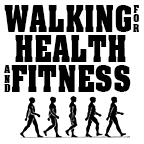How to Dress in Layers
Today’s fitness on the road video is how to dress in layers to stay warm and comfortable in cold weather.
In this video, you’ll learn about the three layers you need to wear in cold weather to stay warm and dry. Also, you'll learn two other important factors on how to dress in layers.
Dressing in layers will allow you to regulate your body temperature as you can shed or add layers as needed.
Your Heat Source
Think of your core as your house furnace. As you walk and do fitness movements you raise your core temperature.
When you properly dress in layers, you can easily capture this heat to stay warm or release it in order to cool down before you sweat too much.
Each layer has a specific job and applying each layer properly will allow you to walk longer, be more comfortable, and enjoy the walking experience.
Today's fitness on the road video is how to dress in layers to stay warm and comfortable in cold weather. In the next four minutes you'll learn about the three layers you need to wear in cold weather to stay warm and dry.
Layer Basics
The Base Layer – Clothing which is closest to skin. The base layer “wicks” perspiration away from skin. You warm up, you begin to perspire, and you want to get the moisture away from your skin as quickly as possible. Go with your preferred fabric, either synthetic or wool, something that is comfortable. As moisture is drawn away from the skin it begins to evaporate.
Avoid cotton as it saturates quickly is very slow to dry out. This will cause you to expend more energy to just keep this now moist layer warm.
The Middle or Insulation Layer helps you retain the heat that radiates from your body. Type of shirts include anything from a thin pullover to very thick sweater or sweatshirt.
In very cold weather, I’ve also added a short sleeve shirt over my base layer to add to the insulation factor, then I added a sweatshirt or my new favorite, my wool “Irish” sweater. The more layers you have the easier it is regulate your body temperature as you can take layers off or put more on as needed.
The Outer Layer offers wind and rain protection. This layer prevents the wind from blowing away warmth built up in the insulation layer and also protects from wet weather.
There are many choices for the outer layer. If you do the base and middle layer correctly, then this could be a little as a light windbreaker. Just recently I walked in 25-degree weather with just my waterproof windbreaker as my outer shell. This jacket has no lining, it just keeps the wind out which is its main job.
Caution: If you feel a cold wind blowing on your core, then you are losing the warmth that the insulation layer is trying to trap.
Two Other Factors to Consider
Protecting the neck: wearing a scarf or bandana around your neck will also trap the heat generated by your body. You can loosen the scarf to allow heat to escape and thus easily regulate your body temperature.
Protecting the head: lastly, wearing a hat will also help you retain body heat and keep you dry in rainy weather. You do loose heat from your head but since your head is generally 7% of your total body surface, only 7% of heat is lost through your head. It was a popular misconception that you lost 40-50% of body heat through the head. This is not true.
Important point: You don’t want to overheat. It’s uncomfortable to be sweaty in cold weather and it could be dangerous. If your base layer is damp it will take more energy to heat that moisture.
Let’s Review Dressing in Layers
The base layer is the most important as it moves perspiration away from your skin. Synthetic is an ideal fabric.
The insulation layer traps warmth around you. Several thinner layer are better.
The outer layer is to keep the wind from blowing away the heat built up in the insulation layer.
Your Next Step:
Make a game plan for walking in cold weather.
Go through your clothes and determine which garments will be used for your base, insulation, and outer layer.
Experiment with different combinations of clothing to find out what keeps you most comfortable.
Take notes during your cold weather walks as to what your wore and how effective it was.
Now that you know how to dress in layers, get out and walk more in cold weather.
Subscribe to my YouTube channel for more the Walking for Health and Fitness videos.
Walk on,
Frank Ring
Author: Walking for Health and Fitness, and Fitness Walking and Bodyweight Exercises
Contact Frank at Frank@walkingforhealthandfitness.com




